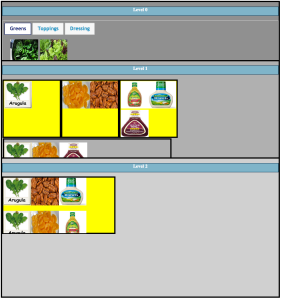With Wellesley’s Science Center Summer Research Program coming to a close, the zSpace team members are taking a moment to asses the current status of their two projects as well as reflect on the trials and tribulations encountered over the summer.
Following a brief stint of time where the fNIRS machine was not working due to a timer issue, Cassie and Jasmine have resumed running user studies. The issue that caused a pause in the this project is one both team members had taken note of before and has been a recurring problem throughout the summer. Unfortunately the timer is an integral part of the fNIRS and while an attempt was made to fix it early in the course of our research, the fix has proven just as unreliable as the machine. During the course of the summer the fNIRS developed a history of not working on Mondays, erratic signal strength due to poor headband (what holds the sensors to a user’s forehead) construction, and overvoltage signals for no apparent reason. Getting the finicky fNIRS to work in conjunction with zSpace proved to be a trial in patience this summer. While sometimes finicky as well, the zSpace proved to be more reliable than the fNIRS though we still ran into a few problems, the biggest of which were unexpected program shutdowns in the middle of user studies. Despite the setbacks and issues with both systems, the zSpace team is still on track to submit a paper to CHI 2015. In the mean time, we’ve created a poster to present some of the current findings of the brain study in the summer research program’s poster session this week.
A lot of progress has been made with MoClo Web Planner since the zSpace team’s last post as is evident by the image included in this blog post. The web version of the surface application has nearly full basic functionality implemented. A new custom theme has been implemented, draggable panels allow users to switch between levels, all parts in Level 0 (stored in the different tabs) can be dragged into, and only into, the correct boxes in Level 1, Level 1 has a combine feature that puts the parts together in different permutations, and any combined part sequence can be dragged into Level 2. Or in salad terms as Cassie is the one that has been figuring out the functionality: In Level 0 a user can select the parts of the salad that they have on hand and place the different food items in the correct boxes in Level 1. The button in Level 1 shows the user all of the possible salads that they can make, and then any number of those salads that seem appealing in Level 1 can be dragged into Level 2. The issues we’ve run into while creating MoClo Web Planner largely stem from learning jQuery on the fly and odd properties of various constricts we’ve implemented for functionality purposes (most notable of these is getting z-index to work in a way that would allow users to drag parts from one panel to another and have parts being visible above the new panel while in the process of dragging). Today the team met with our Boston University collaborators and discussed where we should now focus our energies as well as what functionality of the original MoClo Planner is most important to them.
Even though the program draws to a close, the zSpace team isn’t done. Both Cassie and Jasmine will be continuing to work on the brain study and MoClo Web Planner through August and likely into the school year.


